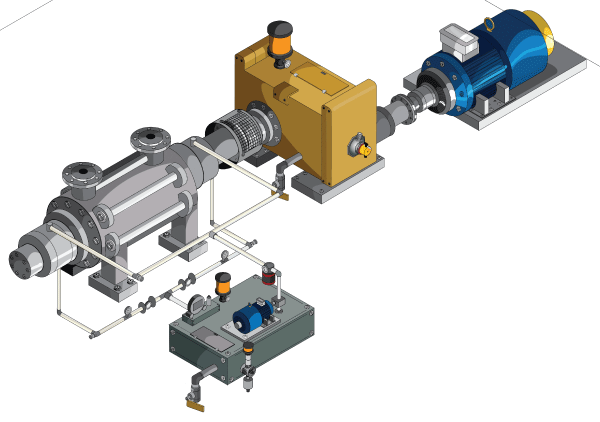Lube Tips
The “Lube-Tips” Section of Machinery Lubrication magazine feaTures innovaTive ideas submitted by our readers. additional tips can be found in our Lube-Tips email newsletter. if you have a tip to share, email it to admin@ machinerylubricationindia.com. To receive the Lube-Tips newsletter, subscribe now at www.machineryLubricationindia.com/page/subscriptions.

A Better Way to Filter Contaminants
When improving fluid cleanliness, it is much easier (and cheaper) to exclude contaminants by ensuring seals, vents and breathers are in good shape rather than to flter out contaminants when they are already inside a component. Use a full-flow spin-oil flter (with an appropriate beta rating) as an air flter. Because the differential pressure across an air flter is lower than across a fullflow oil flter, oil flters are typically more effcient at removing particles from the air than they are from oil.
Check Soap Residue When Switching Greases
When converting from one grease to another, it may be helpful to determine how much soap residue you have resident in bearing housings and estimate how much flushing will be necessary to eliminate the old material. If the amount of old material is low and the residue is soft and pliable, then you may be able to simply increase the relube frequency, perhaps doubling the cycle for a while to flush out the old grease.
Cap Disconnected Hoses During Maintenance
Always ensure that disconnected hoses are capped while maintenance is taking place. It is surprising how much debris can enter an open pipe. This will fnd its way into the system in short order, causing accelerated wear.
When to Use Silicone Synthetics
Silicone synthetic lubricants are used when resistance to oxidation, heat and/or water is important and the performance of other types of lubricants is unacceptable. Applications include hightemperature grease and the lubrication of oxygen compressors. Negatives for using silicone synthetics include high cost, poor boundary lubrication and poor additive solvency (they don’t accept EP and AW additives).
Selecting a Grease to Prevent Corrosion
In a humid environment, condensate can form in rolling-element bearings and cause corrosion, leading to a reduction of the bearing life. By carefully choosing the grease lubricant, you can reduce the effect of the condensed moisture. Greases thickened with sodium soap will absorb (emulsify) large quantities of water but may soften it to such an extent that the grease flows out of the bearing. Lithium soap greases do not emulsify water, but with suitable additives can provide good protection against corrosion. There are also a number of greases available with synthetic thickeners that offer excellent protection against corrosion, prolonging the bearing life.
Advice for Gearbox Oil Changes
When changing oil in a gearbox, I put an air wand (from shop air or portable air source) down into the vent plug. This blows oil residue and deposits off the surface of the gear teeth and casing. It also pushes sediment off the case bottom. I usually hold up a shield to keep the splatter down. Afterward, I like to flush the box with a lower viscosity oil of the same type for a few minutes and then drain again using the air wand. In the past, I used to just drain and fll, but now with this method the oil in the sight glass looks like a new gearbox, with very little residue. The procedure is faster as well.
Why viscosity Index is Important
As the temperature of a gear oil increases, its ability to support a load decreases. This is due to the thinning effect that temperature has on the viscosity. The rate of change differs for each oil. The rate of change is expressed in an oil’s viscosity index (VI) number. The higher the VI number, the lower the rate of change.
If you have a hot gearbox that seems to have a low reliability rating, you might check to see if the oil has a suitable VI and is capable of holding up under the high temperatures. If the product’s VI is less than 120, as shown on the product data sheet, then you might consider an alternative oil for the high-temperature, heavily loaded application.
Tips for Repacking Grease Guns
When repacking grease guns from a pressure line, wipe down the ftting and the pressure line to prevent contamination. When repacking with tubes, move to an environmentally controlled area, such as a control room, to replace the tube.
